Lars Vogel, (©) 2009 - 2026 vogella GmbH :revnumber: 0.2 :revdate: 30.09.2025
Eclipse Dali. This article describes how to use Eclipse Dali for JPA mapping. This article is based on Eclipse 3.5 (Eclipse Galileo).
1. Overview
This article describes Eclipse Dali and does not give a general introduction into JPA. Please see Java Persistence API (JPA) with EclipseLink - Tutorial for an introduction.
To use Eclipse Dali you need Eclipse DTP which is described in Eclipse DTP Tutorial
To use Eclipse Dali you need Derby which is described in
or independently of Eclipse in Apache Derby.
2. Installation
Use the update manager to install from "Web, XML, and Java Development" the "Dali Java Persistence Tools" and "Dali Java Persistence Tools - EclipseLink Support (Optional)". Install also "EclipseLink JPA" from "EclipseRT Target Platform Components".
Please see Using the Eclipse Update Manager.
3. Using Dali
3.1. Project
Create a new project "de.vogella.dali.first" via .
| You can add to an existing project the JPA nature. Use the JPA perspective and right-click on the project and select Configure → Convert to JPA Project |
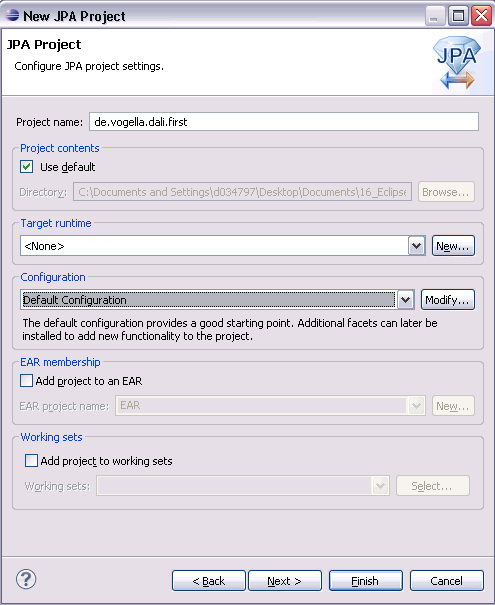
Click twice next.
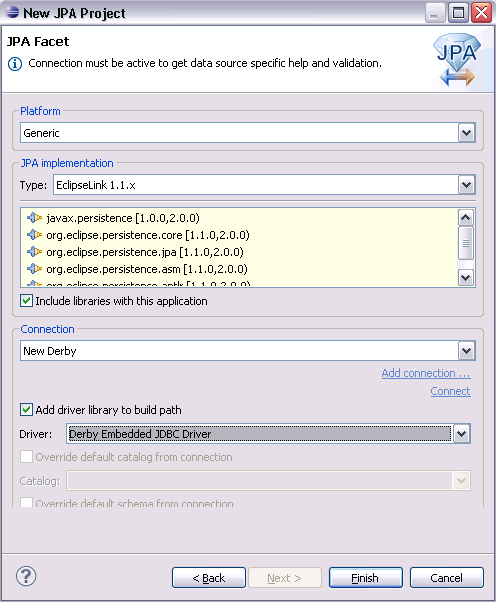
The JPA perspective should now be opened.
Create a package "de.vogella.dali.first".
Select and create the following class.
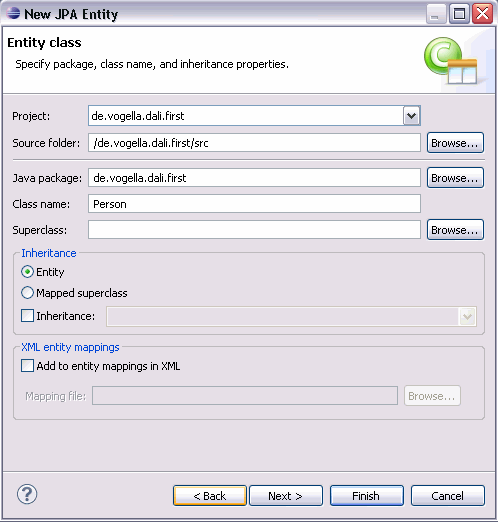
package de.vogella.dali.first;
import java.io.Serializable;
import javax.persistence.Entity;
import javax.persistence.Id;
/**
* Entity implementation class for Entity: Person
*
*/
@Entity
public class Person implements Serializable {
@Id
private int id;
private String firstName;
private String lastName;
private static final long serialVersionUID = 1L;
public Person() {
super();
}
public int getId() {
return id;
}
public void setId(int id) {
this.id = id;
}
public String getFirstName() {
return firstName;
}
public void setFirstName(String firstName) {
this.firstName = firstName;
}
public String getLastName() {
return lastName;
}
public void setLastName(String lastName) {
this.lastName = lastName;
}
}Annotate now the class with @Entity (before the class name". This will activate the views "JPA Structure" and "JPA Details".
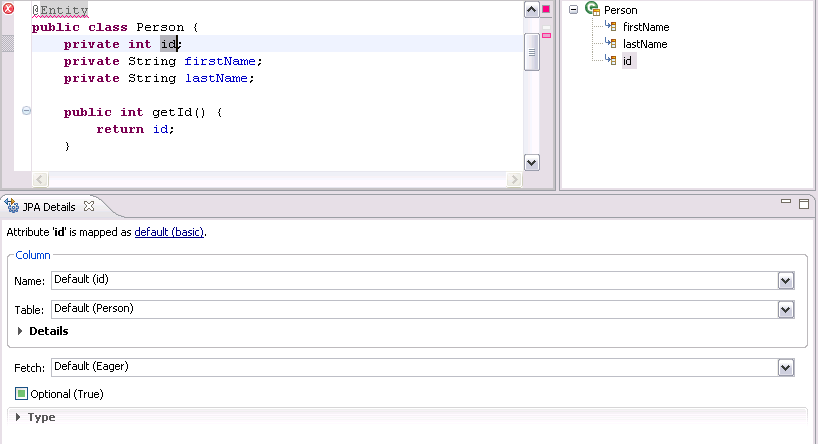
You can now use the right-click in the "JPA Structure" view to map your elements.
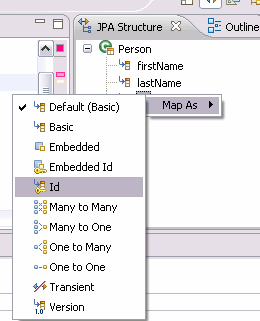
Now you can use the "JPA Details" view to define for example how the primatry keys should get defined, e.g., via a sequence "SEQUENCE".
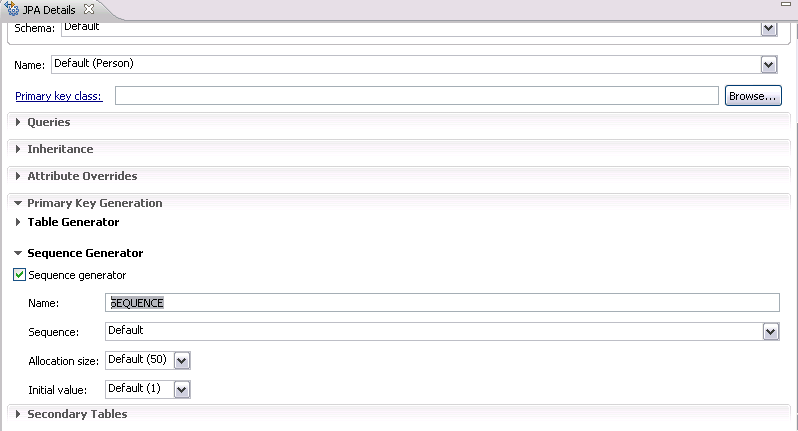
4. Links and Literature
Nothing listed.
4.1. vogella Java example code
If you need more assistance we offer Online Training and Onsite training as well as consulting

